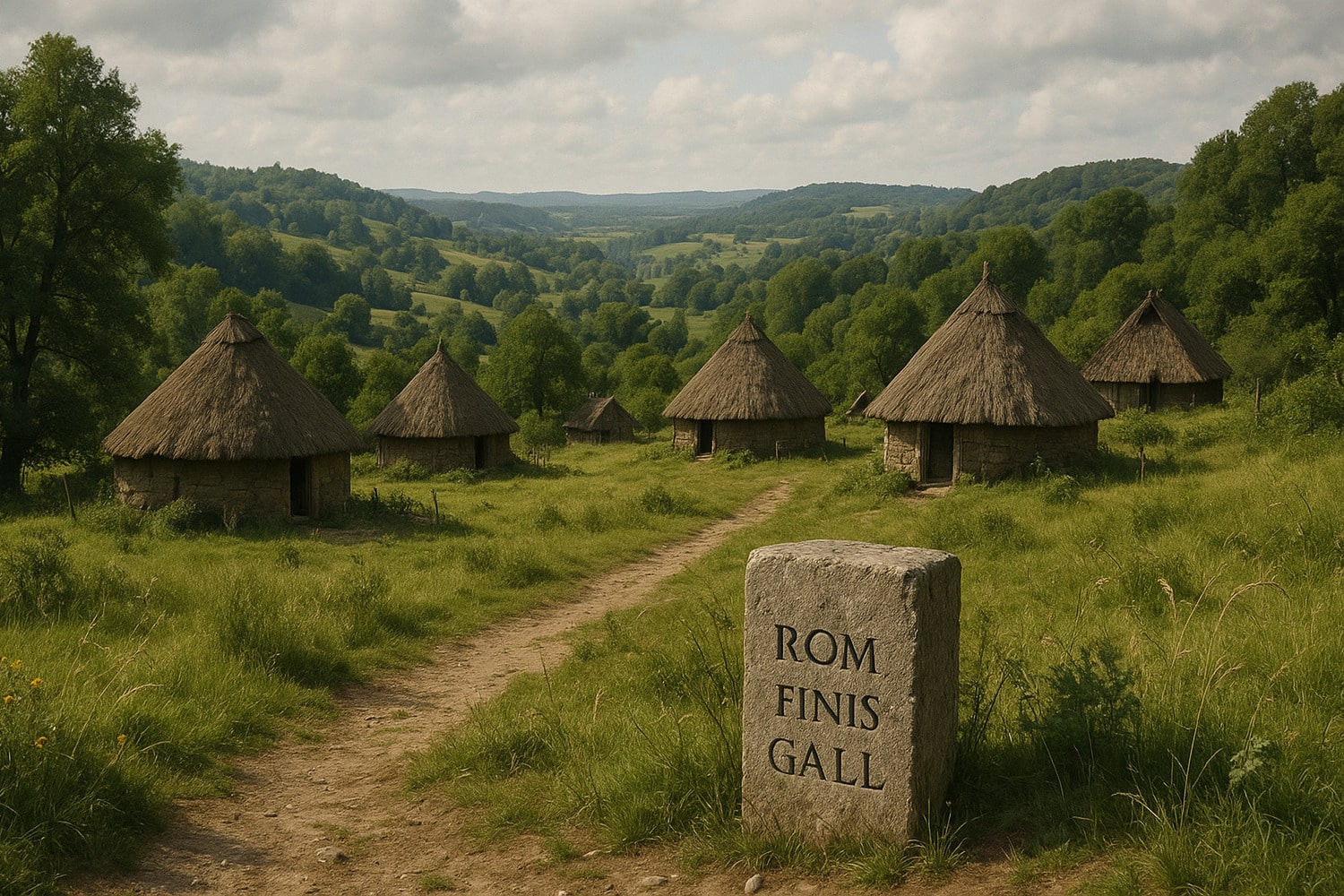Gaul was a historical region of Western Europe that once encompassed the territories of modern France, Belgium, Luxembourg, parts of Switzerland, the Netherlands, Germany, and even northern Italy. It is famous for its rich past, numerous tribes, and dramatic events that took place over the centuries. Ancient authors left many accounts of this land, and its history was closely tied to the development of the Roman Empire. Below are interesting facts that will help to better understand what Gaul was and what place it held in world history. You may not have known many details that reveal fascinating facts about the life and culture of the Gauls.
- Gaul was inhabited by many Celtic tribes with different customs and cultures. They were known as Gauls and stood out for their warlike spirit and love of freedom. These tribes created a complex social structure with chiefs and priests.
- The most famous priestly class in Gaul was the druids, who not only performed religious rites but also taught the youth, healed illnesses, and preserved knowledge. Their education lasted up to twenty years and was transmitted orally. The druids played a crucial role in maintaining Celtic identity.
- The Gauls wore characteristic clothing made of bright fabrics that distinguished them from other peoples. They loved ornaments made of bronze, silver, and gold. Massive torcs, metal neck rings, were especially popular.
- Gaul is known as the land conquered by Julius Caesar during the famous Gallic Wars. These wars lasted from 58 to 50 BC and became a key stage in his career. The victory brought Rome immense resources and new territories.
- The most famous leader of the Gauls was Vercingetorix, who managed to unite tribes against the Romans. He became renowned during the Battle of Alesia in 52 BC, where he fiercely resisted Caesar. Despite the defeat, he became a symbol of bravery and the struggle for freedom.
- Gaul had its own language, which belonged to the Celtic branch of the Indo-European family. It gradually disappeared after the Roman conquest but left traces in place names and some French words. Latin replaced the Gaulish language and later became the basis of French.
- The Gauls were famous for their military skills and were considered formidable opponents. They used long swords, spears, shields, and war chariots. Their courage earned them respect even from the Romans.
- Gaul was rich in natural resources, especially metals. Iron, gold, and salt were mined here, making it an economically important region. These riches attracted neighbors and paved the way for Roman conquest.
- Trade was well developed in Gaul, and the locals maintained contacts both with Rome and other Celtic lands. They exchanged food, ornaments, weapons, and fabrics. Roman merchants valued Gallic goods and promoted cultural exchange.
- The Gauls were skilled craftsmen in pottery and jewelry making. They created unique ornaments that distinguished their products from those of other peoples. Archaeological finds confirm their high level of craftsmanship.
- The Gauls loved feasts, where noisy banquets with songs and music were held. They had a tradition of hospitality and prepared food in large cauldrons. Such feasts had not only an entertaining but also a ritual character.
- After being conquered by Rome, Gaul was divided into several provinces. Roads, cities, and aqueducts began to be built here. Roman culture gradually blended with local traditions, creating a unique synthesis.
- Gaul became an important center of the spread of Christianity in Western Europe. As early as the 3rd century, the first communities appeared, and Lyon became one of the centers of early Christian activity. This played a significant role in the later history of the region.
- In the Middle Ages, the name Gaul gradually disappeared, giving way to Francia and later France. However, memories of the ancient land remained in the works of historians and chroniclers. Gaul became a symbol of the origins of French statehood.
- Interestingly, the symbol of modern France is the rooster, whose roots go back to Gallic times. The Latin word gallus meant both rooster and Gaul, creating a symbolic link. This image survived as an echo of ancient history.
- Archaeological excavations in Gaul revealed large fortified settlements known as oppida. They had defensive walls and complex street systems. Such settlements demonstrate the high level of organization among the Gauls.
- The Gauls had a developed system of beliefs and worshipped many gods. Their deities were connected with nature, war, and fertility. Romans often identified them with their own gods to facilitate integration.
- One of the Gauls’ well-known festivals was Samhain, celebrated at the turn of October and November. This holiday symbolized the change of seasons and the connection with ancestors. Later it became the basis of modern Halloween.
- Gaul gave the world many historical lessons and examples of cultural synthesis. Its heritage remained in legends, city names, and archaeological finds. Thanks to these traces, we can reconstruct captivating facts about the lives of the ancestors of modern French people.
In conclusion, Gaul appears not only as a stage for military conflicts but also as a unique cultural heritage. Incredible facts about this land reveal its diversity and importance for European history. You may not have known how varied the life of the Gauls was and how much they influenced the further development of the continent. Today, research into this region makes it possible to better understand the origins of civilization and the cultural connections of peoples.





